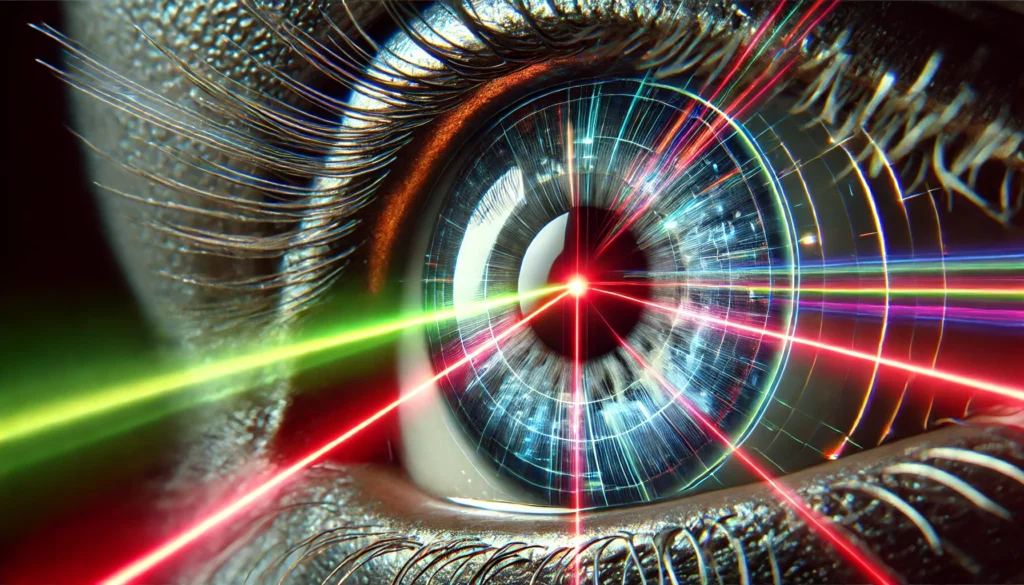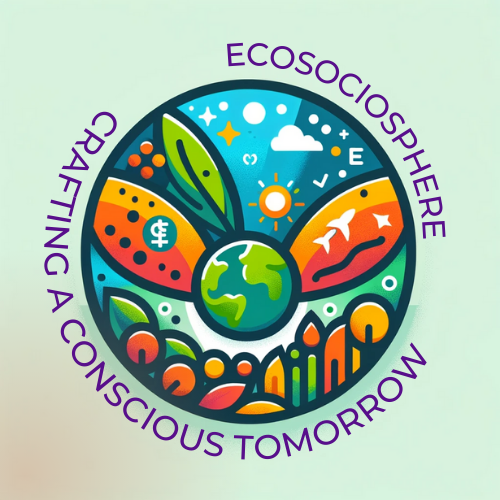Fun Fact: Every colour you’ve ever seen—every red, blue, green, or magenta—is made from just three types of light sensors in your eyes. But now, scientists have found a way to cheat the system and invent a brand-new colour.
Imagine being shown something so vivid, so saturated, that your brain has no name for it. No way to describe it. A colour that exists outside your visual experience, a shade that’s not in your wardrobe, your childhood crayons, or your Instagram filter settings.
Welcome to “olo”—a newly created colour so intense and foreign to the human eye that only five people on Earth have seen it. The story isn’t science fiction. It’s a very real scientific breakthrough that challenges everything we thought we knew about sight, reality, and the limits of human perception.
Colour Vision: Not As Natural As You Think
Let’s get one thing straight: colour isn’t “out there.” It’s a trick—one our brains play using information gathered from our eyes. We perceive colour because of three types of cone cells in our retinas:
- S cones (short wavelengths): Respond to blue light
- M cones (medium wavelengths): Respond to green light
- L cones (long wavelengths): Respond to red light
Together, they create every colour we can see by blending signals like a painter mixes primary colours. What you call “yellow” or “purple” is just a cocktail of cones firing in response to light.
But here’s the catch: certain cones—especially the M cones—are almost never activated alone. When you see green, for example, your M cones fire, but so do their neighbours. There’s always an overlap.
That’s why researchers asked a radical question: What if we stimulated the M cones alone? Would we see something new? The answer was yes. And that new thing is olo.

The Experiment: Tricking the Brain With Lasers
In a feat of precision neuroscience, researchers from the University of California, Berkeley and the University of Washington created a system they called Oz, run by software named Wizard.
Using highly focused lasers, the team mapped the exact location and type of cone cells in each participant’s retina. Then they aimed lasers directly at only M cones, tricking the brain into interpreting a signal it had never processed in isolation.
The result? A colour like nothing else. Some described it as teal or peacock blue, but with saturation so extreme, it felt off-the-charts. You couldn’t compare it to anything familiar. In fact, participants had to dilute it with white light just to match it to the closest known shade.
What’s the name for this unnatural hue? “Olo.” Invented. Untranslatable. Unseen.
The First People to See It
Only five individuals were part of the trial. One of them, Ren Ng—a computer scientist and vision researcher at UC Berkeley—not only helped build the experiment but also experienced it firsthand.
He called it “off-the-charts” in terms of intensity. But even he struggled to explain it. And maybe that’s the most exciting (or unsettling) part of this discovery: it challenges the assumption that humans have already seen everything there is to see.
If new colours are possible, what else is hiding behind the limitations of our senses?
Colour Blindness: A Hopeful Twist
Beyond creating new visual experiences for the curious, this research might change lives.
Ng and his team believe their laser-guided system could help people with colour blindness, especially those with red-green deficiency, the most common form of colour blindness, where only two types of cones function correctly.
Instead of gene therapy (which is still risky and experimental in humans), this method could simulate the missing third cone by delivering artificial but functional colour signals directly to the retina. Essentially, it’s a software patch for the brain’s colour decoder.
Early studies in squirrel monkeys (who are naturally colourblind) have shown that adding the third cone genetically can give full colour vision. The Oz system might replicate this effect without altering anyone’s DNA.
A Revolution in Display Technology?
Here’s a thought: What if future screens don’t need red, green, and blue pixels? What if a single laser, paired with cone-specific stimulation, could produce all visible colours—and then some?
The Oz system already demonstrated this idea. It used only one laser wavelength, stimulating different cone cells in varying intensities, to simulate full-colour videos.
Yes, it’s still limited to a tiny area—about the size of the Moon in the sky—but the concept is now proven. The next generation of virtual reality (VR) or augmented reality (AR) might let us experience colours that don’t yet have names. Imagine playing a video game in hues your ancestors never saw.
So Why Haven’t You Seen Olo?
Because right now, you can’t.
The Oz system requires:
- Precision mapping of your retina (cone-by-cone)
- Real-time eye tracking
- Laser delivery technology that exists in only a few laboratories
We’re talking about a level of control and calibration that would make your smartphone explode from envy. It’s expensive, time-consuming, and technologically elite. But that doesn’t mean it’ll stay that way.
Remember when mobile phones were too big to carry, and 3D printers were lab-only toys? Technology shrinks. And when it does, olo may come to your screen.
What This Means for Science (and Philosophy)
This breakthrough goes far beyond optics or colour theory. It questions reality itself.
If colour—a basic part of how we understand the world—is this flexible, then what else is perception hiding from us? Could we invent new smells? Artificial textures? What happens when we start simulating senses the brain has never evolved to process?
Some scientists suggest we’re entering a new age—not just of extended reality, but expanded reality: where biology is no longer the limit to human experience.
Conclusion: A Colourful Future Awaits
With the invention of olo, science has quite literally added to the human experience. We often think our senses are fixed, that our perception of the world is complete. But this research proves that the world may be far more vibrant than we can imagine.
The next time someone tells you they’ve seen it all—tell them about olo. Then ask them, “What if there are colours we’re not born to see—but smart enough to invent?”
The revolution in human perception has begun. And it’s looking very colourful.
Author’s Note:
As someone who thought colour was a settled matter since primary school, this discovery blew my mind. Olo isn’t just a colour—it’s a reminder that the universe still holds surprises, and we’re only just beginning to see them.
G.C., Ecosociosphere contributor.




